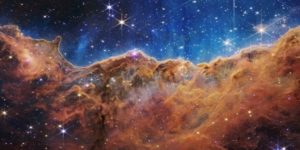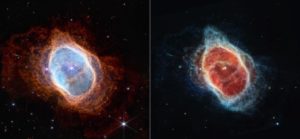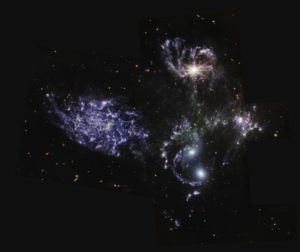-
Animals
- All About Aardvarks – Lesson
- All About Aardvarks – Quiz
- Babirusa – What a Pig! – Lesson
- Babirusa – What a Pig! – Quiz
- The Chimpanzee – The Nearly Human Primate – Lesson
- The Chimpanzee – The Nearly Human Primate – Quiz
- The Donkey – The Intelligent Yet Stubborn Animal – Lesson
- The Donkey – The Intelligent Yet Stubborn Animal – Quiz
- Electric Eels – Shocking Details – Lesson
- Electric Eels – Shocking Details – Quiz
- Ferrets – Playful, Fun-Loving Animals – Lesson
- Ferrets – Playful, Fun-Loving Animals – Quiz
- Giraffe – The Tallest Living Land Animal – Lesson
- Giraffe – The Tallest Living Land Animal – Quiz
- The Hedgehog – Lesson
- The Hedgehog – Quiz
- Iguanas – The “Chickens of the Tree” – Lesson
- Iguanas – The “Chickens of the Tree” – Quiz
- Jaguar – The Largest Cat on the American Continent – Lesson
- Jaguar – The Largest Cat on the American Continent – Quiz
-
Space and Astronomy
- Mars: Just the Beginning? – Lesson
- Mars: Just the Beginning? – Quiz
- Six Billion ‘Earth-like’ Planets in the Milky Way Galaxy? – Lesson
- Six Billion ‘Earth-like’ Planets in the Milky Way Galaxy? – Quiz
- Did NASA Scientists Find Another Universe? – Lesson
- Did NASA Scientists Find Another Universe? – Quiz
- A New Planet Was Discovered – And Old Theories Must Change – Lesson
- A New Planet Was Discovered – And Old Theories Must Change – Quiz
- SpaceX Completes First Civilian Trip to Space – Lesson
- SpaceX Completes First Civilian Trip to Space – Quiz
- First Movie Filmed in Space Successful – Lesson
- First Movie Filmed in Space Successful – Quiz
- James Webb Telescope Heads to Deep Space – Lesson
- James Webb Telescope Heads to Deep Space – Quiz
- A Lot Is Happening on and Around the Moon – Lesson
- A Lot Is Happening on and Around the Moon – Quiz
- First-Ever Picture Taken of the Milky Way’s Black Hole – Lesson
- First-Ever Picture Taken of the Milky Way’s Black Hole – Quiz
- First James Webb Telescope Images Revealed – Lesson
- First James Webb Telescope Images Revealed – Quiz
- Buzz Aldrin Sells Jacket from the Moon Landing – Lesson
- Buzz Aldrin Sells Jacket from the Moon Landing – Quiz
- Humans at Home on the Moon – Could It Really Happen in This Decade? – Lesson
- Humans at Home on the Moon – Could It Really Happen in This Decade? – Quiz
- Winter on Mars – Lesson
- Winter on Mars – Quiz
- Pictures of Mars Show Hidden Figures – Lesson
- Pictures of Mars Show Hidden Figures – Quiz
- Jupiter and Venus Appear to ‘Kiss’ – Lesson
- Jupiter and Venus Appear to ‘Kiss’ – Quiz
- The James Webb Telescope Finds Six Ancient Galaxies – Lesson
- The James Webb Telescope Finds Six Ancient Galaxies – Quiz
- Would an EpiPen Work in Space? – Lesson
- Would an EpiPen Work in Space? – Quiz
- Satellite Spots Earth’s Second Moon? – Lesson
- Satellite Spots Earth’s Second Moon? – Quiz
- Space Mining – The Race is On and China is Leading – Lesson
- Space Mining – The Race is On and China is Leading – Quiz
- How Did Gold and Platinum Arrive on Earth – Lesson
- How Did Gold and Platinum Arrive on Earth – Quiz
- Odysseus Has Found Its New Home – Lesson
- Odysseus Has Found Its New Home – Quiz
-
The Environment
- Red Tide: No Fun in the Florida Sun – Lesson
- Red Tide: No Fun in the Florida Sun – Quiz
- Leaded Gas Eradicated from the World, Says United Nations – Lesson
- Leaded Gas Eradicated from the World, Says United Nations – Quiz
- COVID Plastic Waste: A Big Problem for Oceans – Lesson
- COVID Plastic Waste: A Big Problem for Oceans – Quiz
-
Archaeology and Paleontology
- Ancient Human Species Discovered – Lesson
- Ancient Human Species Discovered – Quiz
- Biblical City of Sodom Found in the Jordan Valley? – Lesson
- Biblical City of Sodom Found in the Jordan Valley? – Quiz
- Antarctic Explorer’s Ship Found After a Century – Lesson
- Antarctic Explorer’s Ship Found After a Century – Quiz
- Newly Found Diary Shows How Ancient Egyptians Built the Pyramids – Lesson
- Newly Found Diary Shows How Ancient Egyptians Built the Pyramids – Quiz
- Study Shows ‘Apocalyptic Dust’ Might Have Killed the Dinosaurs – Lesson
- Study Shows ‘Apocalyptic Dust’ Might Have Killed the Dinosaurs – Quiz
- Ancient Celestial Calendar Found in a 2,000-Year-Old Tomb – Lesson
- Ancient Celestial Calendar Found in a 2,000-Year-Old Tomb – Quiz
- Hiker Stumbles Upon Ancient Fossils While Hiking in Italy – Lesson
- Hiker Stumbles Upon Ancient Fossils While Hiking in Italy – Quiz
-
Technology
- 3 Reasons to Protect Your Online Privacy – Lesson – VIDEO
- The Rise of Deepfakes – Lesson
- The Rise of Deepfakes – Quiz
- A New Mayflower Voyage, Captained by AI Technology – Lesson
- A New Mayflower Voyage, Captained by AI Technology – Quiz
- The Latest Supercomputer Is Breaking Speed Barriers – Lesson
- The Latest Supercomputer Is Breaking Speed Barriers – Quiz
- LNGenZ Survey: What is the Greatest American Invention? – Lesson
- LNGenZ Survey: What is the Greatest American Invention? – Quiz
- School and ChatGPT – Is it Cheating? – Lesson
- School and ChatGPT – Is it Cheating? – Quiz
- Artificial Intelligence Gets an Upgrade? – Lesson
- Artificial Intelligence Gets an Upgrade? – Quiz
- Scientists Plan to Bring the Dodo Bird Back from Extinction – Lesson
- Scientists Plan to Bring the Dodo Bird Back from Extinction – Quiz
- Is There Too Much Technology in Education? – Lesson
- Is There Too Much Technology in Education? – Quiz
- AI Coming to a Keyboard Near You – Lesson
- AI Coming to a Keyboard Near You – Quiz
- Is the NSA Browsing Your Browser History? – Lesson
- Is the NSA Browsing Your Browser History? – Quiz
- AI Can’t Compete With People Skills – Lesson
- AI Can’t Compete With People Skills – Quiz
- How Social Media Is Hazardous to Generation Z – and Beyond – Lesson
- How Social Media Is Hazardous to Generation Z – and Beyond – Quiz
- Surgeon General’s Warning for Social Media – Lesson
- Surgeon General’s Warning for Social Media – Quiz
- Pay With Your Face: Is the End of Cash Nigh? – Lesson
- Pay With Your Face: Is the End of Cash Nigh? – Quiz
- Can Artificial Intelligence Really End Cancer? – Lesson
- Can Artificial Intelligence Really End Cancer? – Quiz
-
Mind and Body
- Teen Scientist’s Invention Mixes Music with Mental Health – Lesson
- Teen Scientist’s Invention Mixes Music with Mental Health – Quiz
- Man Receives First Pig Heart Transplant – Lesson
- Man Receives First Pig Heart Transplant – Quiz
- Sniffing Out the Truth About Smells – Lesson
- Sniffing Out the Truth About Smells – Quiz
- The Power of Playtime – Lesson
- The Power of Playtime – Quiz
- Is Language Getting More Emotional? – Lesson
- Is Language Getting More Emotional? – Quiz
- Scientists Say Household Chores Help Kids’ Brains – Lesson
- Scientists Say Household Chores Help Kids’ Brains – Quiz
- Transplant of Pig Kidney Into a Human Successful So Far – Lesson
- Transplant of Pig Kidney Into a Human Successful So Far – Quiz
- The Lack of a College Degree Is Shortening Lifespans – Lesson
- The Lack of a College Degree Is Shortening Lifespans – Quiz
-
Flora and Fauna
- Dogs Can Tell When Humans Make a Mistake, Says Study – Lesson
- Dogs Can Tell When Humans Make a Mistake, Says Study – Quiz
- Jonathan: The World’s Oldest Living Tortoise – Lesson
- Jonathan: The World’s Oldest Living Tortoise – Quiz
- The Monarch Butterfly Makes a Surprise Return – Lesson
- The Monarch Butterfly Makes a Surprise Return – Quiz
- Bat Falcon Spotted in the United States for the First Time – Lesson
- Bat Falcon Spotted in United States for the First Time – Quiz
- Charles Darwin’s Notebooks Mysteriously Returned after 20 Years – Lesson
- Charles Darwin’s Notebooks Mysteriously Returned after 20 Years – Quiz
- Six Endangered Red Wolf Pups Born in Wildlife Refuge – Lesson
- Six Endangered Red Wolf Pups Born in Wildlife Refuge – Quiz
- Scientists Record Never-Before-Heard Whale Call – Lesson
- Scientists Record Never-Before Heard Whale Call – Quiz
- Underwater Meadow Gets Credit as the World’s Largest Living Plant – Lesson
- Underwater Meadow Gets Credit as the World’s Largest Living Plant – Quiz
- Scientists Trying to Bring the Tasmanian Tiger Back from Extinction – Lesson
- Scientists Trying to Bring the Tasmanian Tiger Back from Extinction – Quiz
- Jurassic Era Insect Found at Arizona Walmart – Lesson
- Jurassic Era Insect Found at Arizona Walmart – Quiz
- The Comeback of the Nearly Extinct Earless Lizard – Lesson
- The Comeback of the Nearly Extinct Earless Lizard – Quiz
- A Strange Golden Orb Found on the Ocean Floor Is Alive! – Lesson
- A Strange Golden Orb Found on the Ocean Floor Is Alive! – Quiz
- Peanut: The Pet Chicken With a World Record – Lesson
- Peanut: The Pet Chicken With a World Record – Quiz
-
Mathematics
- Metric vs. Imperial: A Weighty Debate in Britain – Lesson
- Metric vs. Imperial: A Weighty Debate in Britain – Quiz
- The Abacus is Helping Kids Master Math Skills – Lesson
- The Abacus is Helping Kids Master Math Skills – Quiz
- Retired Engineer Discovers ‘Einstein’ Shape – Lesson
- Retired Engineer Discovers ‘Einstein’ Shape – Quiz
First James Webb Telescope Images Revealed – Lesson

Webb Telescope showing a new star being born (NASA, ESA, CSA, STScI/Handout via Xinhua)
The first images from the Webb telescope are shared.
Last December, the James Webb Telescope was sent into space. Nearly seven months later, the first images captured by the most powerful space telescope are being shared with the public.
This unique machine was designed to travel far away from the Earth. It is already using its mirrors and infrared sensors to take photos of phenomena in other galaxies. Capturing breathtaking photographs, the Webb is wowing people worldwide, offering a look back into the history of our universe.
Webb Telescope’s Crystal Clear Images
The Canadian Space Agency, European Space Agency, and NASA were each a part of the effort – from the construction of this telescope to its launch and now its photo production.

Southern Ring Nebula (NASA, ESA, CSA, STScI/Handout via Xinhua)
One of Webb’s scientists at NASA, Stefanie Milam, says that when it came to seeing the images for the first time, even she “couldn’t believe that we saw everything so clearly, and how bright they were.” She also shared, “it’s really exciting to think of the capability and opportunity that we have for observing these kinds of objects in our solar system.”
Webb’s first observations include photos and data from Jupiter, asteroids, exoplanets, stars, and even the furthest galaxies. Some of the objects have never been seen before. The telescope is planned to remain active for ten years, so these pictures are only the beginning of what the Webb will show us. One goal is to take us back to the big bang, to see “the universe turn the lights on for the first time,” according to a NASA chief scientist. How is this possible?
The Webb “can see backward in time just after the big bang by looking for galaxies that are so far away, the light has taken billions of years to get from those galaxies to ourselves,” says another NASA scientist. We are looking at the past, time traveling back to the start of our universe, through the images. These are some of the first stars and galaxies that ever formed.
New Discoveries

Stephan’s Quintet (NASA, ESA, CSA, STScI/Handout via Xinhua)
According to NASA, the first photos are “the deepest and sharpest images of the distant universe to date.”
Stephan’s Quintet, a group of five galaxies, was photographed to help astronomers study how galaxies interact and merge.
A planetary nebula (clouds of gas and dust produced by a dying star) was also captured. The Southern Ring Nebula occurred about 2,500 light years away from Earth.
Exoplanets were also photographed. An exoplanet is a planet beyond our own solar system. For example, WASP-96b is a gas giant that orbits its star very closely and heats to over 1,800 degrees Fahrenheit. It is 1,150 light years away. Astronomers and scientists had believed this exoplanet had clear skies, but images sent back from the Webb challenge this idea, showing evidence of clouds. The clouds show evidence of water in the atmosphere. WASP-96b may not be habitable or host any life forms, but this discovery shows the Webb can help us learn more about exoplanets.
Scientists hope to make new discoveries about nearby and distant planets, stars, and galaxies as the telescope sends more images.